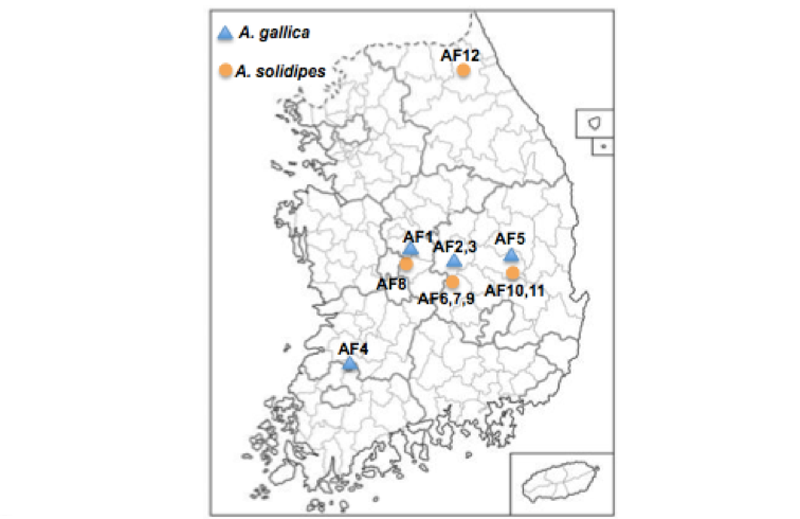Abstract
Armillaria is a white-rot fungus that decomposes organics; it is also a root pathogen that kills trees. Recently, since the forest tending practice, the incidence of Armillaria infections on tree stumps has been increasing. Herein, we have examined the morphological features of Armillaria solidipes and Armillaria gallica collected from 10 areas in Korea, and investigated the activities of the decomposing enzymes cellulase and laccase of these two Armillaria species. A. solidipes was found in eight host tree species including Pinus densiflora, Quercus serrata, and Castanea crenata at the altitude of 107–1,396 m, while A. gallica was found in three host species including P. densiflora and Fraxinus rhynchophylla at the altitude of 119–556 m. The fruiting bodies of A. solidipes are close with lamellae, and have brown to black hairs on the stipe, while those of A. gallica are distant with lamellae and clavate-shaped, and have yellow hairs on the base. The activites of cellulase of the two species were not different, but the activity of A. solidipes laccase was higher (12.94 ± 0.4 U/ml) than that of A. gallica laccase (9.14 ± 0.3 U/ml).
Figures & Tables

Fig. 1. Twelve collection sites for and in Korea.


